Module 1 Exercise Solutions
- Scanner: (Id, "Max") (Op, ":=") (Id, "Min") (Op, "+") (Lit, 4) (Op, *) (Lit, 3)
- A := 12 * (Ex + E1/Em)
- (a)
- (a) Token = Basic lexical unit
- (a) Run the X0 program (that takes X programs to M programs) through the X0 compiler (the M program which takes X0 programs to m programs). The output is M code, but it is m code which takes X programs to M programs. Thus, we have a program written in M which takes X programs to M programs. This is an X compiler.
| (a) | - (v) |
| (b) | - (i) |
| (c) | - (iv) |
| (d) | - (iii) |
| (e) | - (vi) |
| (f) | - (ii) |
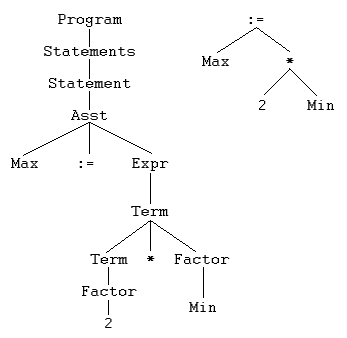
Parser:
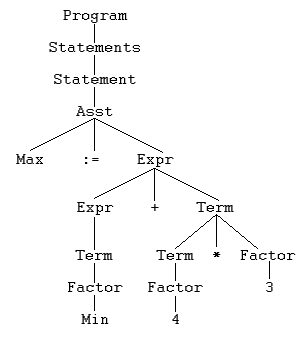
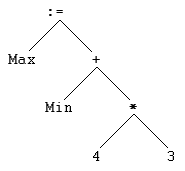
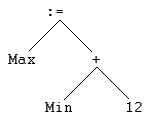
Preparation for code generation
(Lots of other possibilities)

Code Generation
| PushAddr | Max | |
| Push | Min | |
| Load | (StackTop, Reg1 | Reg1 = Min |
| Add | #12, Reg1 | Reg1 = 12*Min |
| Store | Reg1, @1(StackTop) | Max = Reg1 |
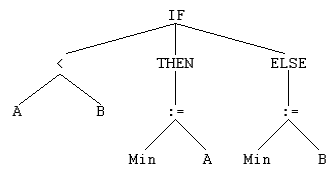
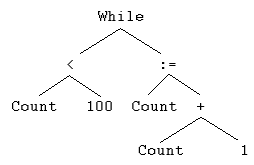
(b) Syntax analysis = Parsing
(c) Parse tree = Syntax tree
(d) Intermediate representation = Intermediate code
(e) Abstract syntax tree = Abstract structure tree
(f) Analysis Phase = Front end
(b) Take the M program which translates L programs to N code and run the L program which translates L programs to N code through it. The resulting N code is a program which takes L programs to N code. This is an L compiler for machine N.

